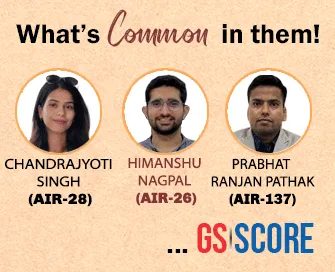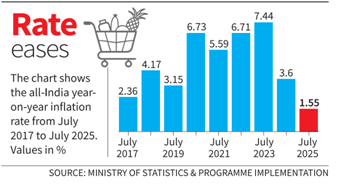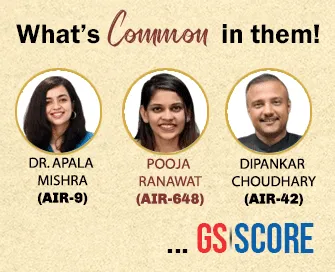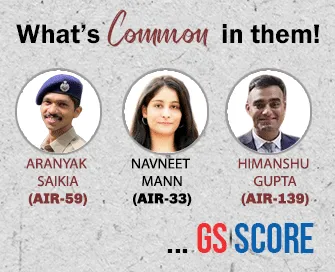

13th August 2025 (13 Topics)
Mains Issues
Context:
Elon Musk’s Starlink is set to debut in India, signalling a significant shift in internet infrastructure and connectivity capabilities.
Satellite Internet as a Strategic Enabler and Security Challenge
Introduction
- Satellite internet delivers broadband connectivity via satellites in Geostationary (GEO), Medium Earth Orbit (MEO), and Low Earth Orbit (LEO).
- Recent developments in LEO mega-constellations like Starlink have transformed satellite-based communications.
Why Satellite Internet is Needed
- Limitations of Ground-Based Networks:
- Economically unviable in sparsely populated or remote areas.
- Vulnerable to natural disasters (floods, earthquakes).
- Inadequate for moving platforms (ships, aircraft) and temporary operations.
- Advantages of Satellite Internet:
- Global Coverage: Independent of terrain and terrestrial infrastructure.
- Rapid Deployment: Useful in disaster management and sudden demand surges.
- Mobility Support: Ships, aircraft, oil rigs, military deployments.
Types of Satellite Orbits and Characteristics
|
Orbit Type |
Altitude |
Coverage |
Latency |
Example |
|
GEO |
35,786 km |
1/3 of Earth |
High (~600 ms) |
Viasat GX |
|
MEO |
2,000–35,786 km |
Regional/global |
Moderate |
O3b |
|
LEO |
<2,000 km |
Small footprint |
Low (<40 ms) |
Starlink |
Mega-Constellations (LEO)
- Hundreds/thousands of satellites with on-board processing.
- Optical inter-satellite links for global data routing without excessive ground reliance.
- Requires continuous “hand-off” between satellites due to rapid orbital movement.
Applications of Satellite Internet
- Civilian Uses:
- Remote area connectivity, telemedicine, precision agriculture, IoE (Internet of Everything).
- Direct-to-smartphone services under testing by Starlink& AST SpaceMobile.
- Military Uses:
- Secure communications in conflict zones (e.g., Ukraine war).
- Operational readiness in isolated zones (e.g., Indian Army in Siachen).
- Drone integration, bypassing jamming systems.
- Disaster Management:
- Restoring communications post natural disasters (Hurricane Harvey example).
Security and Regulatory Challenges
- Dual-use technology: Potential misuse by insurgents and criminal networks.
- Borderless nature complicates jurisdiction and control.
- Cybersecurity concerns: Risks of hacking, espionage, signal jamming.
- Space debris and orbital congestion risks from large constellations.
Strategic Significance
- Connectivity as a dimension of national power.
- Critical for digital economy growth, defence readiness, and bridging the digital divide.
- India must ensure indigenous capacity and international policy influence.


Prelims Articles
Context:
The National Cooperative Development Corporation (NCDC) has announced updates on its ongoing sector-specific schemes to enhance the productivity, market reach, and socio-economic impact of cooperative societies across India.
Establishment & Status:
- Statutory corporation established in 1963 under an Act of Parliament.
- Functions under the Ministry of Cooperation, Government of India.
Mandate:
- Promotion, strengthening, and development of farmer cooperatives in farm and non-farm sectors.
- Key focus: agricultural marketing, input supply, processing, storage, cold chain, seeds, fertilizers, and allied activities.
- Non-farm focus: dairy, livestock, handloom, sericulture, poultry, fisheries, and cooperatives for weaker sections.
Own Flagship Schemes:
- YUVA SAHAKAR – Supports new and innovative cooperative societies.
- AYUSHMAN SAHAKAR – Covers healthcare infrastructure, medical education, AYUSH systems.
- NANDINI SAHAKAR – Supports women’s cooperatives and entrepreneurship.
- DAIRY SAHAKAR – Financial support for ESG-linked dairy cooperative projects.
- SWAYAM SHAKTI SAHAKAR YOJNA – Loans to Agricultural Credit Cooperatives for Women SHGs.
- DEERGHAVADHI KRISHAK PUNJI SAHAKAR YOJNA – Long-term loans for agricultural credit cooperatives.
Central Sector / Sponsored Schemes Implemented by NCDC:
- Agricultural Marketing Infrastructure (AMI) – Storage & infrastructure.
- Mission for Integrated Development of Horticulture (MIDH) – Post-harvest management.
- Agriculture Infrastructure Fund (AIF) – Interest subvention & credit guarantee.
- Sub-Mission on Seed and Planting Material (SMSP) – Boosting seed production.
- PM MatsyaSampada Yojana (PMMSY) – Fisheries development.
- PM Formalisation of Micro Food Processing Enterprises (PMFME).
- Formation of 10,000 Farmer Producer Organisations (FPOs).
- PM KisanSampada Yojana (PMKSY) – Food processing, cold chain & value addition.
- National Scheduled Tribes Finance and Development Corporation (NSTFDC).
- National Livestock Mission (NLM)&Rashtriya Gokul Mission (RGM).
- Animal Husbandry Infrastructure Development Fund (AHIDF).


Prelims Articles
Context:
The Ministry of Ayush has undertaken multiple international collaborations, including agreements with WHO, to standardize, promote, and integrate Indian traditional medicine systems globally under the International Cooperation Scheme.
International Cooperation Scheme:
- Central Sector Scheme for Promotion of International Cooperation for AYUSH (IC Scheme).
- Objective: To promote the export of AYUSH products and services, facilitate international recognition of AYUSH systems, develop global markets, encourage research and academics, and organize training and awareness events worldwide.
- Coverage: Ayurveda, Yoga, Naturopathy, Unani, Siddha, Sowa-Rigpa, and Homoeopathy.
International Engagements:
- MoUs Signed:
- 25 Country-to-Country MoUs.
- 52 Institute-to-Institute MoUs.
- 15 AYUSH Chair MoUs in foreign universities/institutions.
WHO Collaborations:
- Standardized Terminology Documents: Developed for Ayurveda, Unani, and Siddha for global acceptance.
- Benchmark Documents: International standards for practice and training in Ayurveda and Unani (covering safety, quality, competency).
- Global Traditional Medicine Centre (GTMC): Established in 2022 in collaboration with WHO as a global knowledge hub for evidence-based traditional medicine.
- Integration into WHO Instruments:
- International Classification of Diseases (ICD).
- International Classification of Health Interventions (ICHI).
- Ongoing Publications: Technical reports on Siddha training & practice and Yoga training.
- Traditional Medicine Global Strategy 2025–2034: Being developed with India’s support.
- Development of Traditional Medicine intervention categories and index for ICHI with focus on Ayurveda, Siddha, and Unani.


Prelims Articles
Context:
Retail inflation based on the Consumer Price Index (CPI) declined to 1.55% in July 2025, driven by deflation in key food items, marking the lowest level in eight years.
Inflation Measurement:
- In India, inflation is primarily measured through the Consumer Price Index (CPI) and Wholesale Price Index (WPI).
- The CPI is released by the National Statistical Office (NSO), Ministry of Statistics and Programme Implementation.
- CPI includes both rural and urban indices and measures changes in the price level of a fixed basket of goods and services consumed by households.
Retail Inflation July 2025 Data Highlights:
- Overall CPI inflation:55%, well below the RBI’s target band of 2–6%.
- Food & beverages inflation:-0.8% (deflation), with sharp contractions in vegetables (-21%) and pulses (-14%).
- Core inflation (excluding food & fuel):1%, near the RBI’s 4% target.
- Fuel & light inflation:7% (up from 2.5%).
- Housing inflation: stable at 3.2%.
Reasons for Decline:
- High statistical base from previous year.
- Good monsoon, healthy reservoir levels, strong kharif sowing.
- International commodity prices subdued due to weak global demand.


Prelims Articles
Context:
The Government of India, through the Spices Board, is promoting turmeric exports via the SPICED Scheme and strengthening sectoral development through the National Turmeric Board.
SPICED Scheme:
- Sustainability in Spice Sector through Progressive, Innovative and Collaborative Interventions for Export Development (SPICED).
- Implemented by: Spices Board, Ministry of Commerce and Industry.
- Key Components:
- Food safety and quality assurance certifications to meet international standards.
- Post-harvest quality upgradation, value addition, and processing support.
- Training for stakeholders in quality improvement and entrepreneurship development.
- Quality evaluation of turmeric export consignments via accredited laboratories.
- Buyer–Seller Meets (domestic & international) to create direct market linkages between farmers, exporters, processors, and global buyers.
|
National Turmeric Board:
Turmeric in India:
|


Prelims Articles
Context:
The Government of India launched the Digital Agriculture Mission in September 2024 to create a Digital Public Infrastructure for agriculture, enabling real-time, data-driven, and farmer-centric solutions across the country.
Digital Agriculture Mission (DAM):
- Launch: Approved in September 2024.
- Implementing Ministry: Ministry of Agriculture & Farmers Welfare.
- Core Objective: Develop a Digital Public Infrastructure (DPI) for agriculture to provide timely and accurate crop-related information and enable innovative digital solutions.
- Key Components:
- AgriStack DPI – Three foundational registries:
- Geo-Referenced Village Maps
- Crop Sown Registry
- Farmer Registry – contains demographic, landholding, and cropping data to enable access to schemes, credit, insurance, procurement, and online input/output markets.
- Krishi Decision Support System (Krishi-DSS) – Integrates satellite, weather, soil, crop, water, and scheme data to provide:
- Crop & soil maps
- Yield estimation models
- Drought/flood monitoring systems
- Soil Fertility & Profile Mapping – Nationwide Soil Resource Mapping at 1:10,000 scale by Soil and Land Use Survey of India (SLUSI) for rational land use and sustainable agriculture.
- AgriStack DPI – Three foundational registries:
|
Other Initiatives: Digital Crop Survey (DCS):
Per Drop More Crop (PDMC) Scheme:
|


Prelims Articles
Context:
The Government highlighted the integrated implementation of PM-AASHA components, including PSS, PSF, PDPS, and MIS, for safeguarding farmer incomes and stabilising prices of key agricultural commodities.
About PM-AASHA:
- Pradhan Mantri AnnadataAaySanrakshan Abhiyan.
- Objective: Ensure remunerative prices to farmers and affordable prices for consumers.
- Components:
- Price Support Scheme (PSS) – Operational on request from States/UTs when market prices of notified pulses, oilseeds, and copra fall below MSP.
- Procurement done by Central Nodal Agencies (CNAs):
- National Agricultural Cooperative Marketing Federation of India Ltd. (NAFED)
- National Cooperative Consumers’ Federation of India Ltd. (NCCF)
- Operates through State agencies.
- Farmers must be pre-registered with valid land records.
- Procurement based on Fair Average Quality (FAQ)
- Eliminates intermediaries—MSP payment is made directly to farmers.
- Procurement done by Central Nodal Agencies (CNAs):
- Price Stabilisation Fund (PSF) – Administered by Department of Consumer Affairs.
- Maintains buffer stocks of major pulses (Tur, Urad, Chana, Moong, Masur) and onion.
- Releases stocks during low supply/lean season to stabilise prices.
- Price Deficit Payment Scheme (PDPS) – Compensates farmers for the difference between MSP and actual selling price (without physical procurement).
- Market Intervention Scheme (MIS) – For procurement of perishable and horticultural crops not covered under MSP, during price crashes.
- Price Support Scheme (PSS) – Operational on request from States/UTs when market prices of notified pulses, oilseeds, and copra fall below MSP.
Digital Initiatives:
- e-Samriddhi – NAFED’s portal for procurement under PSS.
- e-Samukti – NCCF’s portal for procurement under PSS.
- Enables farmer registration, scheduling, and direct online MSP payment.


Prelims Articles
Context:
The Union Cabinet has approved four semiconductor projects worth ?4,594 crore under the ?76,000 crore India Semiconductor Mission (ISM), expanding the total approved projects to ten.
India Semiconductor Mission (ISM):
- Launched in December 2021 under the aegis of the Ministry of Electronics and Information Technology (MeitY).
- Objective: To develop a sustainable semiconductor and display ecosystem in India, enabling domestic manufacturing and reducing import dependence.
- Financial Incentives: Offers up to 50% fiscal support for setting up semiconductor fabrication and display fabrication units.
- Encompasses four schemes:
- Scheme for Setting up Semiconductor Fabs
- Scheme for Setting up Display Fabs
- Scheme for Setting up Compound Semiconductors/Silicon Photonics/Sensors Fab and Semiconductor ATMP/OSAT facilities
- Design Linked Incentive (DLI) Scheme
Newly Approved Projects (August 2025):
- SiCSem – Silicon carbide integrated facility, Bhubaneswar (Odisha).
- Continental Device India Pvt. Ltd. – Expansion of discrete semiconductor manufacturing facility, Mohali (Punjab).
- 3D Glass Solutions Inc. – Vertically integrated advanced packaging and embedded glass substrate unit, Bhubaneswar (Odisha).
- ASIP Technologies – Semiconductor unit in Andhra Pradesh (location TBD).
Strategic Significance:
- Silicon carbide (SiC) is an advanced material with high thermal conductivity and high voltage resistance, crucial for electric vehicles, renewable energy, and aerospace applications.
- India aims to position itself as a competitive player in the global semiconductor supply chain, which is currently dominated by East Asian economies like Taiwan and South Korea.
- IIT Bhubaneswar already hosts a ?45 crore silicon carbide research facility, aligning academia with industrial growth.


Prelims Articles
Context:
Following the successful use of long-range stand-off weapons during Operation Sindoor, the Indian Air Force is focusing on inducting missile systems with strike ranges exceeding 200 km to enhance deep-strike capabilities while avoiding enemy air defence.
Long-Range Air-to-Air Missiles (AAMs)
- Air-launched guided weapons designed to destroy enemy aircraft beyond visual range (BVR), typically >50 km, using onboard radar or infrared seekers.
Key Features:
- Guidance: Active radar, semi-active radar, or infrared homing.
- Range: 70–400+ km depending on missile type.
- Kill Probability: Designed to engage high-value airborne assets like AWACS, bombers, and fighters before they can strike.
- Launch Platform: Fighter jets, interceptors.
Examples:
- India:Astra Mk-II (160 km), Astra Mk-III (in development, 300 km)
- International: AIM-120D AMRAAM (U.S., ~180 km), Meteor (Europe, >200 km), PL-15 (China, 300+ km), R-37M (Russia, 400 km)
Long-Range Air-to-Ground Missiles (AGMs)
Air-launched precision-guided missiles designed to strike ground or surface targets at stand-off distances, keeping the launching aircraft outside hostile air defence range.
Key Features:
- Targets: Command centres, radar stations, airfields, infrastructure.
- Guidance: GPS/INS, imaging infrared (IIR), laser guidance, terrain contour matching (TERCOM).
- Range: 150–1,000+ km (stand-off capability).
- Warhead Types: High-explosive, penetrator, submunition.
Examples:
- India:BrahMos-A (air-launched supersonic cruise missile, 400–450 km), NG-ARM (New Generation Anti-Radiation Missile, 150–200 km)
- International: AGM-158 JASSM-ER (U.S., ~1,000 km), Storm Shadow/SCALP-EG (UK/France, ~560 km), Kh-59MK2 (Russia, 290–500 km)


Prelims Articles
Context:
The Union Government’s National Sickle Cell Anaemia Elimination Mission (NSCAEM), launched in July 2023, has screened over 60.7 million people in high-prevalence states, marking significant progress towards eliminating sickle cell disease (SCD) by 2047.
About Sickle Cell Disease (SCD):
- Genetic blood disorder altering the shape of red blood cells into a sickle or crescent form.
- Reduces oxygen-carrying capacity, leading to anemia and severe complications.
- Disproportionately affects tribal populations due to higher genetic prevalence.
- As per Global Burden of Disease (2021): ~82,500 births annually with SCD in India.
National Sickle Cell Anaemia Elimination Mission (NSCAEM):
- Launch: July 2023 under Ministry of Health and Family Welfare (MoHFW).
- Target: Screen 70 million individuals under 40 years by FY26; eliminate genetic transmission of SCD by 2047.
- Approach: Large-scale screening, genetic counselling, public awareness, distribution of genetic status cards.
- Coverage: As of July 31, 2025 – 60.7 million screened in 17 high-prevalence states; 2.16 lakh diagnosed with disease, 1.69 million as carriers.
- High-prevalence states: Odisha, Madhya Pradesh, Gujarat, Chhattisgarh, Maharashtra (95% of cases).
Institutional Support:
- Centres of Excellence (CoEs): 15 medical institutions for SCD care & research.
- Training: National ToT programme (October 2024) for health professionals.
- Inter-Ministerial Collaboration:MoHFW, Tribal Affairs, Social Justice, Education, Women & Child Development ministries.


Editorials
Context:
Supreme Court ordered the relocation of all stray dogs in Delhi to shelters within eight weeks, sparking debate over legality, precedent, and humane considerations.
Legal and Procedural Concerns
- Contravention of Existing Laws: The order disregards the Prevention of Cruelty to Animals Act, 1960, and PCA (Animal Birth Control) Rules, 2023, which prohibit relocation of dogs and mandate scientific birth control programmes.
- Violation of Judicial Precedent: The SC ignored its 2024 judgment in Animal Welfare Board of India vs People for Elimination of Stray Troubles, undermining the principle of stare decisis and weakening faith in judicial finality.
- Bypassing Evidence-Based Decision-Making: The ruling lacked scientific basis, failed to assess practical implementation challenges, and overlooked amicus curiae recommendations.
Governance and Policy Failures
- Failure of Local Bodies: Many local authorities have been unable to implement mandated birth control measures to control stray dog populations effectively.
- Limited Vaccination Programmes: Anti-rabies vaccination coverage for stray dogs has been inadequate, leaving both human and animal health at risk.
- Poor Waste Management: Inefficient municipal waste handling has contributed to the rise in street dog populations by providing easy access to food sources.
Ethical and Social Implications
- Erosion of Compassion Mandate: Article 51A(g) of the Constitution obligates citizens to show compassion for living creatures; the order risks penalising humane caregivers.
- Scapegoating Stray Dogs: The decision diverts attention from systemic governance failures, using street dogs as a convenient target for public anger.
- Risk of Social Polarisation: Drastic measures without humane engagement can fuel polarisation and politicisation of the human-canine conflict.
Practice Question:
Critically evaluate the Supreme Court’s order on stray dog relocation in Delhi in the context of statutory provisions, judicial precedent, and ethical considerations. How should India balance public safety with animal welfare in urban governance?


Editorials
Context:
Several Western nations, including the UK and France, have announced plans to recognise Palestinian statehood in response to mounting allegations of Israeli war crimes and genocide in Gaza.
Changing Diplomatic Positions
- Historic Policy Shift in the UK and Allies: The UK, under Prime Minister Keir Starmer, will recognise Palestine in September unless Israel halts the Gaza war; France, Canada, Australia, and other Western allies have pledged similar action.
- Contrast with Global South Recognition: Nations in the Global South, including India, recognised Palestinian sovereignty in the late 1980s, but Western nations previously conditioned recognition on a final settlement under the Oslo Accords.
- Erosion of the Post-1948 Consensus: Recognition signals a break from decades of Western policy that aligned uncritically with Israel, even amid prolonged occupation since 1967.
Allegations and Public Opinion
- Genocide Accusations Gaining Legitimacy: International bodies like the ICC and ICJ are investigating Israel for genocide; respected Israeli and global rights groups, including B’Tselem and Amnesty International, have endorsed the charge.
- Humanitarian Catastrophe in Gaza: Israeli actions have killed 2.6% of Gaza’s pre-war population, displaced nearly all residents, and triggered famine-like conditions through a total blockade since March 2025.
- Declining Support in the West: Public protests and polling in Europe and the US show drastic drops in favourable views of Israel, with overwhelming calls for a ceasefire and growing belief in genocide claims.
Political and Structural Obstacles to Peace
- Netanyahu’s Political Survival Strategy: Ending the war risks political collapse and legal reckoning for Prime Minister Netanyahu, prompting him to prolong hostilities despite international condemnation.
- Far-Right Expansionist Agenda: Influential ministers Bezalel Smotrich and Itamar Ben-Gvir advocate the destruction of Gaza and displacement of Palestinians to enable Jewish settlements.
- No-State Solution Vision: The current Israeli leadership rejects Palestinian sovereignty entirely, aiming for neither a two-state nor a one-state arrangement that includes Palestinian rights.
Practice Question:
Critically examine the recent shift in Western nations’ stance towards recognising Palestinian statehood in the context of the Gaza conflict. How do allegations of genocide, changing public opinion, and Israel’s domestic political dynamics shape this development?


Editorials
Context:
The US is hosting a Trump-Putin summit in Alaska, signalling a potential reset in Washington-Moscow relations after years of confrontation, with significant geopolitical implications for India.
Context and Strategic Setting
- Summit after Years of Hostility: The Alaska meeting marks the first in-person US-Russia presidential summit since 2005, occurring against the backdrop of deteriorating ties since 2014 due to Crimea’s annexation and NATO expansion.
- Geopolitical Backdrop: Russia’s ties with China have deepened amid Western sanctions, while India’s regional interests have been constrained by the Russia-West conflict.
- Trump’s Reset Agenda: The US aims to explore a limited rapprochement with Russia by offering sanctions relief in exchange for cooperation on security and Arctic engagement.
Negotiation Dynamics and Diverging Interests
- Peace-for-Profit Logic: Trump envisions de-escalation in exchange for economic concessions, but core disputes over Ukraine, NATO expansion, and military postures remain unresolved.
- Commercial and Political Trade-offs: Significant trade packages and possible tariff rollbacks could emerge, though Trump retains tariffs as a strategic tool, potentially against India.
- Contradictory Strategic Goals: While Russia seeks durable security guarantees and recognition of its sphere of influence, the US focuses on limiting Chinese leverage over Moscow.
Implications for India
- Balancing Act in Great Power Politics: Improved US-Russia ties could ease China-Russia coordination that currently challenges India’s security space.
- Trade and Tariff Risks: Even if the summit leads to a US-Russia economic thaw, India might still face tariff measures from Washington as part of Trump’s economic nationalism.
- Scope for Strategic Leverage: India can potentially benefit from reduced US-Russia hostility by expanding defence and energy partnerships with both, while maintaining its strategic autonomy.
Practice Question:
Discuss the potential geopolitical and economic implications for India of a US-Russia rapprochement emerging from the Alaska Summit. How should India recalibrate its foreign policy to safeguard its strategic interests?



